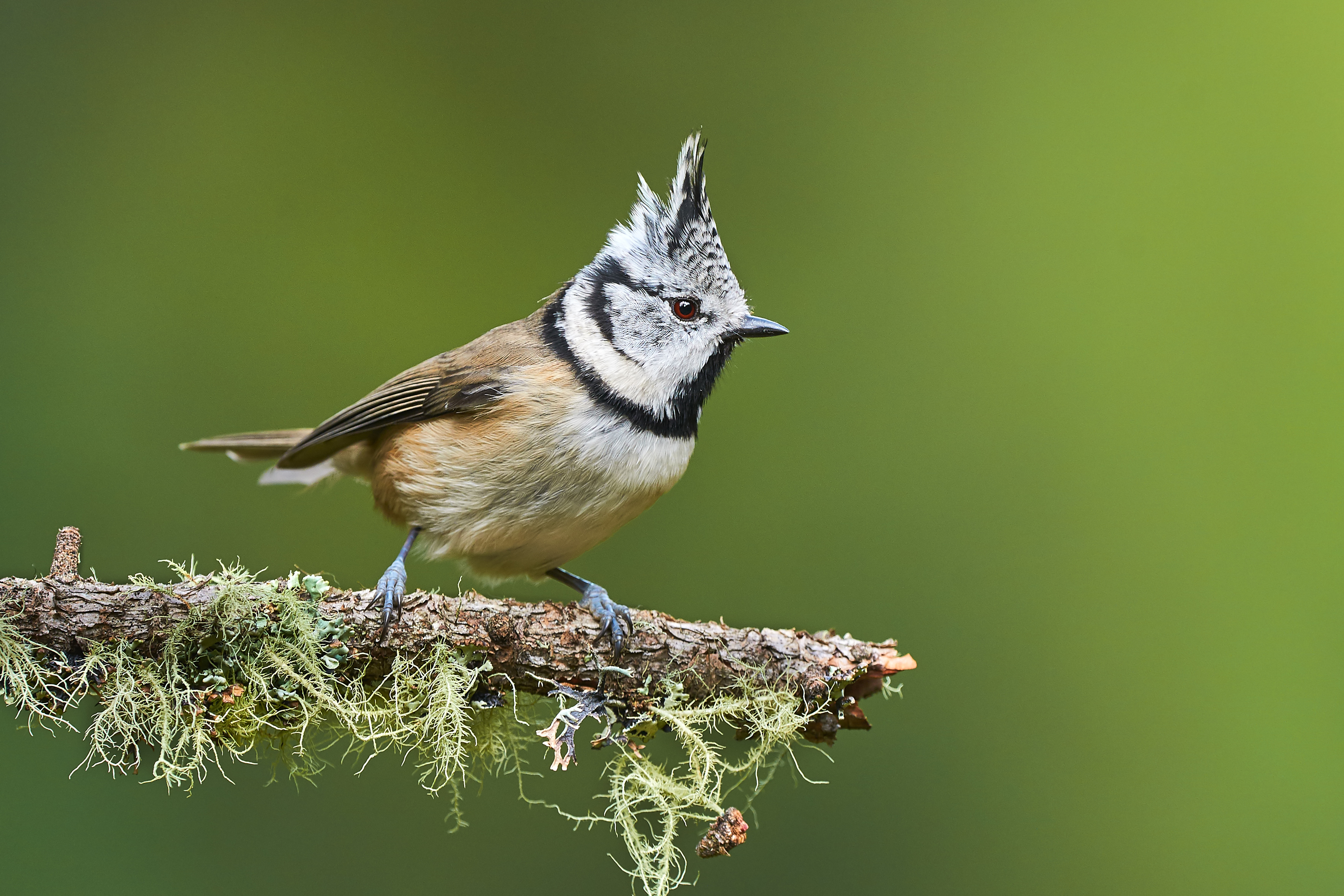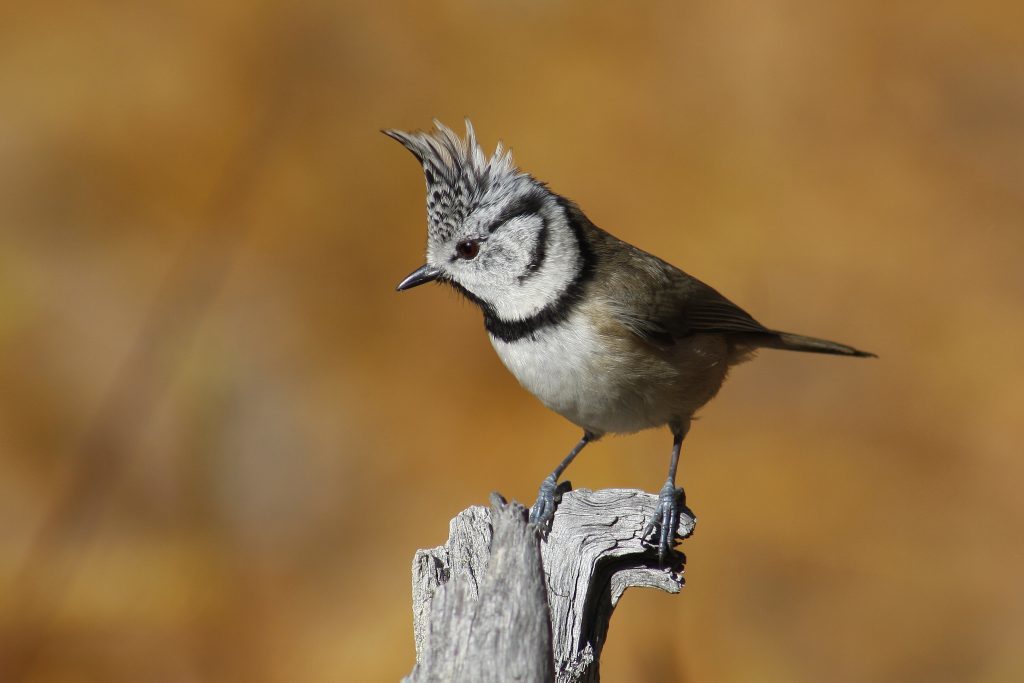Loch Mallachie in the heart of Abernethy Forest in Strathspey is one of my favourite places; a shining shimmer of glistening water surrounded by snow-streaked hills and the imposing Scots pines of the Caledonian wildwood that envelopes its shores.
It had been a while since I had last visited here and it felt good to be back. I sat on a gnarled tree root and scanned the water with my binoculars in the hope of spotting goldeneye ducks, but the loch was devoid of life. That’s how birdwatching is – you win some and lose some – and truth be told it had been a winning day already, as only minutes earlier I had stumbled upon a pair of crested tits.
They are such exquisite birds, with their dainty speckled crests and boundless energy. Crested tits are specialists of these ancient forests, nesting in old pine stumps where they excavate holes in the rotting wood. They are also birds totally lacking in wanderlust and are very much confined to this part of the country and a few other places in northern Scotland.
It is strange that they have never colonised forests to the south of here, such as in Deeside and Perthshire, but it seems that the mountainous expanse of the Cairngorms acts as a natural barrier they are unwilling to cross. They are real home birds, happy with their lot.
I sat by the loch for a while longer in a contemplative mood and began dreaming of ospreys. Any day now the first ospreys will be hunting over this water having arrived back from their West African wintering grounds. It is one of the most exciting events in nature’s calendar and I never tire from watching the newly arrived birds renovating their storm-damaged eyries, the air alive with their high-pitched calls.
I wandered back down a path that took me deep into the forest. In amongst the ground cover of blaeberry and juniper scrub, a large mound of orangey-brown pine needles materialised ahead of me. It was a wood ant nest and a miracle of natural engineering. How can such tiny insects build such a magnificent domed structure?
Weak March sunshine filtered through the pine canopy, which raised my hopes that this gentle warming may have stirred some of these rare ants into life. I was right, for on one small part of the nest huddled a group of about 20 wood ants, soaking up the sun’s rays.
Wood ants are regarded by ecologists as one of the keystone species of these forests, given that they benefit the health of woodlands in so many different ways, including devouring tree pest insects.
They also aid the dispersal of native wild plant seeds by carrying them to new areas, with some of these seed types containing a special substance to attract the ants. It is an intricate woodland web of life, with each element interacting upon the other. Take one part away and the rest crumbles.
Info
Very little of Scotland’s ancient Caledonian pine forest still exists with about 80 remnants left in the Highlands. The biggest of these is Abernethy Forest, which is home to a wide range of specialised inhabitants.











